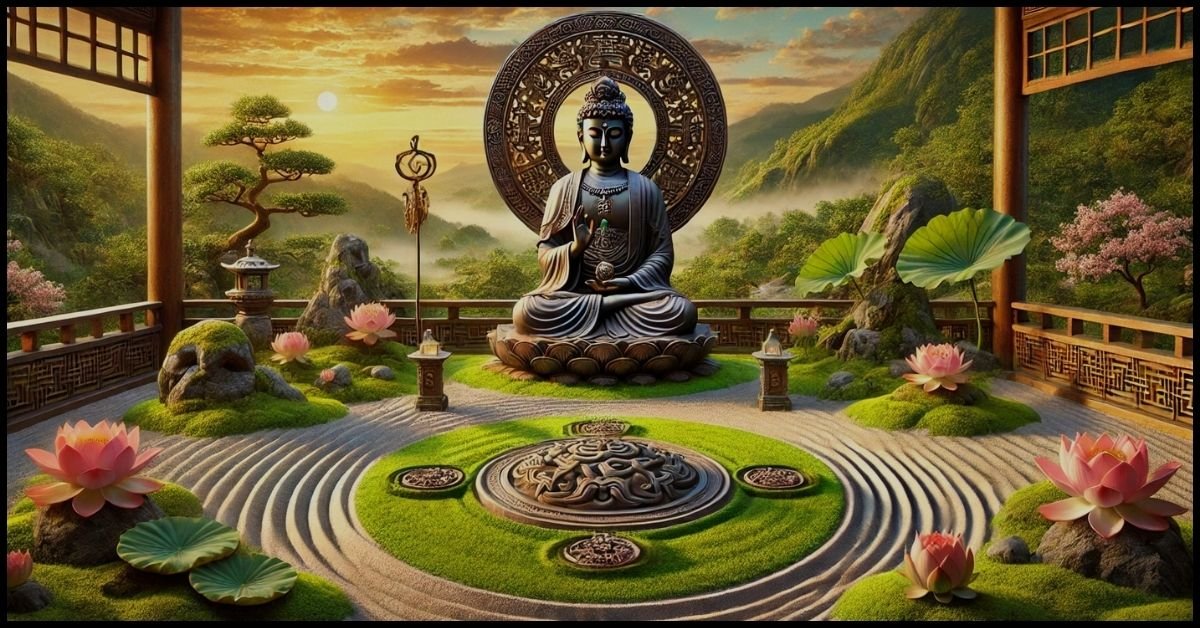The imagery of 地藏王菩薩 (Kṣitigarbha Bodhisattva) is a cornerstone of Buddhist iconography, representing deep compassion and spiritual guidance. With the advent of digital technology, depictions in imagesize:地藏王菩薩 1920×1080 HD provide a new dimension to appreciating and understanding these revered visuals. This comprehensive guide explores every facet of 地藏王菩薩 imagery, from its historical significance to modern-day applications.
Introduction to imagesize:地藏王菩薩 1920×1080
地藏王菩薩, or Kṣitigarbha Bodhisattva, symbolizes boundless compassion and resolve. Known as the “Earth Store” or “Earth Treasury,” this figure is deeply venerated in Mahayana Buddhism for pledging to liberate all sentient beings from suffering before attaining Buddhahood.
Origins and Evolution of 地藏王菩薩 Imagery
Historical Context
- Originating in India, the concept of Kṣitigarbha was later adapted into East Asian Buddhism.
- The Bodhisattva’s prominence grew through the Earth Store Sutra (地藏經), elaborating on his vow to save beings in hell.
Early Representations
Early depictions were simple, focusing on his role as a monk. Over time, artistic styles became more elaborate to convey his divine nature.
Symbolic Features of 地藏王菩薩
Iconic Attributes
- The Staff (錫杖) Represents guidance and the breaking of hell’s gates.
- Wish-Fulfilling Jewel (如意寶珠): Symbolizes light in darkness and the fulfillment of wishes.
- Shaven Head and Robe: Denote renunciation and spiritual purity.
Postures and Gestures
- Standing Posture: Active guidance and vigilance.
- Seated on a Lotus Throne: Purity and elevation above worldly struggles.
Artistic Interpretation Across Cultures
Chinese Depictions
- Ornate designs with gold accents and intricate backgrounds.
- Often depicted with celestial attendants.
Japanese Interpretations
- Minimalistic with an emphasis on serenity.
- Known as Jizō Bosatsu in Japan, often shown as a protector of children.
Korean Variations
- Vibrant colors and dynamic designs.
- Commonly integrated into temple murals.
Importance of High-Definition Imagery in 1920×1080 Resolution
Enhanced Visual Detail
- Every aspect of 地藏王菩薩’s depiction, from facial expressions to intricate patterns, is more visible in HD.
Accessibility
- High-definition images allow global audiences to study and appreciate Buddhist art, even without access to temples or museums.
Modern Applications
- Used in meditation apps, virtual reality experiences, and educational content to bring ancient wisdom into modern spaces.
Color Symbolism in 地藏王菩薩 Representations
Gold
- Represents enlightenment, divinity, and spiritual wealth.
Red
- Symbolizes vitality, compassion, and protective energy.
Blue and Green
- Reflect tranquility, wisdom, and the expansive nature of the Bodhisattva’s vow.
White
- Denotes purity and the removal of obstacles on the spiritual path.
The Role of Imagery in Religious Practice
1. Visual Focal Points for Meditation
- High-resolution images provide clarity for focusing during meditation, enhancing mindfulness.
2. Tools for Teaching
- Used to educate devotees about the symbolism and teachings of 地藏王菩薩.
3. Ritual Significance
- Images are integral to prayers, particularly for guiding the deceased and invoking blessings.
Integration of imagesize:地藏王菩薩 1920×1080 HD in Modern Contexts
1. Digital Worship
- Practitioners can use HD images on personal devices for daily worship and spiritual reflection.
2. Artistic Inspiration
- Artists reinterpret 地藏王菩薩’s imagery in digital art, blending tradition with modern aesthetics.
3. Educational Resources
- High-definition visuals are used in schools and institutions to introduce Buddhist art and philosophy.
Technological and Artistic Benefits of HD Imagery
- Preserving Cultural Heritage
High-resolution imagery ensures that the details of traditional art are preserved for future generations.
- Supporting Interfaith Dialogue
Detailed images can be used as a basis for discussions about shared values across different faiths.
- Accessibility in a Globalized World
HD imagery allows those unable to visit temples or museums to engage with sacred art meaningfully.
FAQs: Common Questions About 地藏王菩薩 Imagery
Q1: What makes imagesize:地藏王菩薩 1920×1080 HD unique?
The high resolution enhances the visual clarity of intricate details, making it ideal for study and spiritual practice.
Q2: Can these images be used in non-religious settings?
They are often appreciated as cultural artifacts and used in artistic or educational contexts.
Q3: How do I respect 地藏王菩薩 imagery?
Ensure the images are treated with reverence, displayed in clean spaces, and not used for trivial purposes.
Q4: Are there differences in 地藏王菩薩’s depiction across countries?
While the core symbolism remains consistent, artistic styles vary by region, reflecting local traditions.
Q5: Where can I find authentic HD images?
Authentic images can be sourced from Buddhist organizations, digital art repositories, or licensed artists.
Conclusion: Merging Tradition with Innovation
The exploration of imagesize:地藏王菩薩 1920×1080 HD highlights the rich symbolism, cultural significance, and modern relevance of 地藏王菩薩 imagery. By preserving these sacred visuals in high definition, we ensure their teachings continue to inspire and guide people in spiritual and everyday life.
Whether for meditation, education, or artistic appreciation, these high-quality representations bridge the ancient wisdom of Buddhism with contemporary technological advancements. Dive into the depth of 地藏王菩薩’s legacy, and let these images serve as a beacon of compassion, guidance, and enlightenment in your journey.

Zoe Rae is a dynamic writer at SpinUpBusiness.com, where she covers a broad range of topics from business strategies to lifestyle, technology, and more. With a keen eye for detail and a passion for making complex ideas simple, Zoe crafts content that informs, engages, and inspires her readers.



